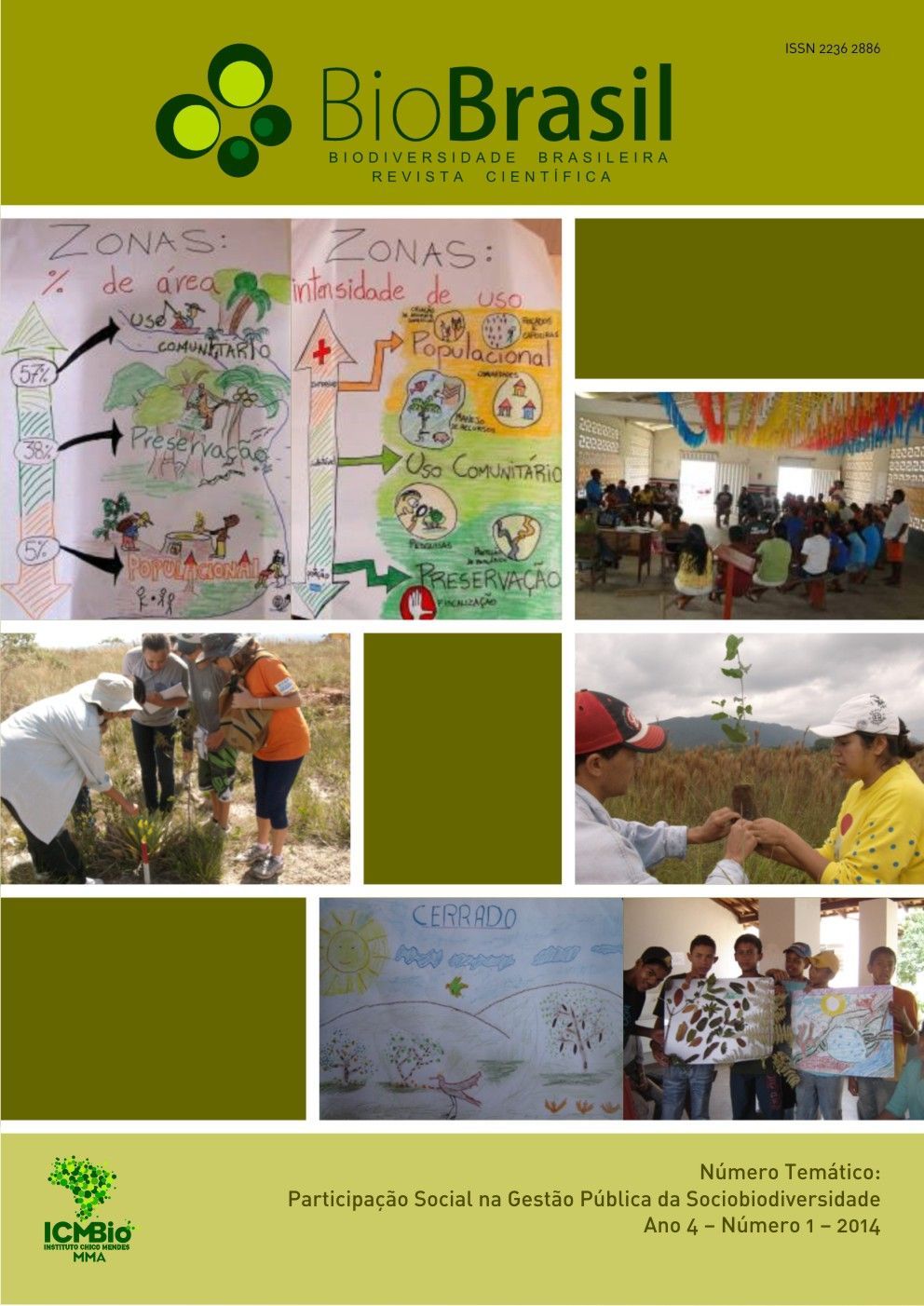Método da semente: a construção participativa do Plano de Manejo da Floresta Nacional do Purus
DOI:
https://doi.org/10.37002/biodiversidadebrasileira.v4i1.357Keywords:
management plan, participation, seed method, social environmental managementAbstract
The Purus National Forest (Purus NF) Management Plan (MP) construction is reported to present the Seed Method (SM), innovatively applied there. This protected area (PA) was created in 1988 in a place where already existed, resettled by Government since 1982, a traditional population organized as intentional community. Devoted to an Amazonian ancestral ethnobotanyc tradition – the cult of ayahuasca this traditional population syncretizes forest devotion and Christianity, attracting fans. After created, the PA generated a conceptual conflict that only found solution with the MP construction. The seed methos, used in this plan, is a conceptual model that uses previously known notions, conceiving management organization as living organism. The concepts of systems isomorphism (Bertalanffy 2006), patterns understanding (Mollisson 1988) and meme (Dawkins 2010) offer theoretical support to in-depth exploration of analogies between ‘seed’ and ‘projects’ advocated by Seed method. Then presents brief systematization of the methodology and its application in the MP of the Purus NF. The Seed method – universally employed by nature to “design” living organisms – is considered the methodological reference to the Plan, becoming an inspiring source of intuitive and familiar analogies. The Plan is understood as ‘seed’ of a network formatted as ‘tree’ deployed along a ‘life cycle’. The Plan – this ‘seed’ – seeking to reconcile social and environmental reality, conceived the PA as a Social Environmental Laboratory to experience forest community sustainability matrices in Amazonia potentially multipliable by appropriate public policies. Technically, SM is summarized on two didactically accessible tools: the “Life Tree Diagram”, which models the organic management ‘system’ image on form dimension, and the “Life Cycle Framework”, a matrix that projects its strategic organic evolution on time dimension. In conclusion we list up some methodology virtues. Exploring intuitive notions we have about ‘seeds’ the Method is naturally friendly, facilitating management appropriation by social agents. SM constitutes an integrated temporal, strategic approach, contemplating resources policy. It is a fruitfull and promising new paradigm for planning human organizations in general and PAs in particular.
References
Arnstein, S.R. 2002. Uma escada da participação cidadã. Revista da Associação Brasileira para o
Fortalecimento da Participação – PARTICIPE, 2(2): 4-13.
Bertalanffy, L. 2006. Teoria geral dos sistemas: fundamentos, desenvolvimentos e aplicações.
Tradução de Francisco M. Guimarães. 6 ed. Editora Vozes. 360p.
Dawkins, R. 2010. O gene egoísta. Tradução de Rejane Rubino. 4 ed. Companhia das Letras. 540p.
ICMBio (Instituto Chico Mendes de Conservação da Biodiversidade). 2009. Plano de manejo da Floresta Nacional do Purus: Vol. I – Diagnóstico e Vol II – Planejamento. 663p.
Mollison, B. 1988. Permaculture: a designer´s manual. Tagari Publications. 573p.
Downloads
Published
Issue
Section
License
Copyright (c) 2014 Os autores mantêm os direitos autorais de seus artigos sem restrições, concedendo ao editor direitos de publicação não exclusivos.

This work is licensed under a Creative Commons Attribution-NonCommercial-NoDerivatives 4.0 International License.
Os artigos estão licenciados sob uma licença Creative Commons Atribuição-NãoComercial-SemDerivações 4.0 Internacional (CC BY-NC-ND 4.0). O acesso é livre e gratuito para download e leitura, ou seja, é permitido copiar e redistribuir o material em qualquer mídia ou formato.





 v3-3-0-3-2-1-8-release.27
v3-3-0-3-2-1-8-release.27